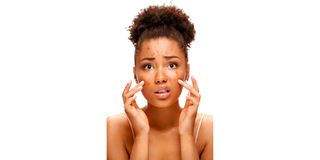How to beat acne rosacea through diet and up your confidence

How to beat acne rosacea through diet and up your confidence. Photo | Photosearch
What you need to know:
- Acne rosacea is a condition that begins with facial flushing and when this continues
- The capillaries in the skin can break and stay red permanently
“According to most studies, people's number one fear is public speaking. Number two is death. Death is number two. Does that sound right? This means to the average person, if you go to a funeral, you're better off in the casket than doing the eulogy.” - Jerry Seinfeld, American comedian.
Unfortunately for 26-year-old Maria that sounded about right. She suffered from a condition called acne rosacea, which resulted in intense facial flushing (not related to normal acne). The problem was that the condition was aggravated when she was stressed, embarrassed or having a coffee. So you can imagine how traumatic company presentations were – she’d be bright red throughout!
Acne rosacea is a condition that begins with facial flushing and when this continues, the capillaries in the skin can break and stay red permanently. The skin can then thicken and swell and for some, this can happen around the nose, causing it to become bulbous (rhinophyma).
Rosacea is believed to occur due to an excess of heat, and exposure to the sun, eating spicy foods and drinking alcohol can aggravate this. Thus by drinking lukewarm chamomile or fresh mint tea, or by eating cooling foods like cucumber and watermelon - all of which have cooling properties – Maria was able to take the first steps to reduce this internal heat and control her condition.
Skin conditions are also thought to be a reflection of the body’s inability to absorb the goodness from food and process the by-products of digestion. In the case of rosacea, there is evidence suggesting that many sufferers don’t produce enough stomach acid, an important component in the digestion of protein, or lipase, the enzyme that helps to digest fats. Symptoms of low stomach acid include feeling hungrier after eating (yes really), heartburn, bloating, and a feeling of fullness in the stomach. For Maria, supplementation helped both these symptoms and her skin.
The majority of people who come to see me about skin conditions, have been on a course, or indeed several, courses of antibiotics to help control the situation. While this may help somewhat in the short run, it’s not a long-term solution. The problem is that antibiotics kill “good” bacteria as well as bad, which ironically are required to protect you and keep your skin looking healthy. For this reason, I also suggested a probiotic for Maria.
To that I added other clear skin basics: plenty of water, lots of colourful fruit and veg., drastically cutting down sugar and supplementing a strong B-complex. Just three months later, the difference was hard to believe. The permanent redness was gone, the flushing had reduced considerably but, more importantly, Maria had her self-confidence back.




